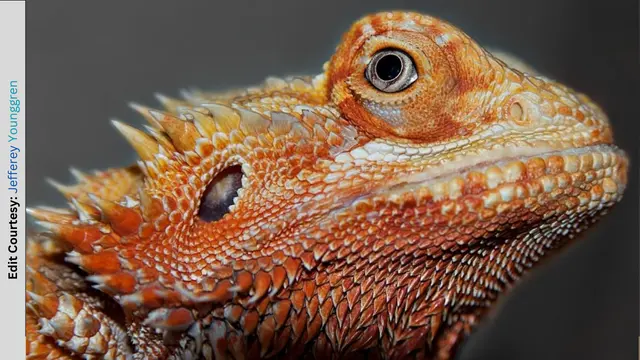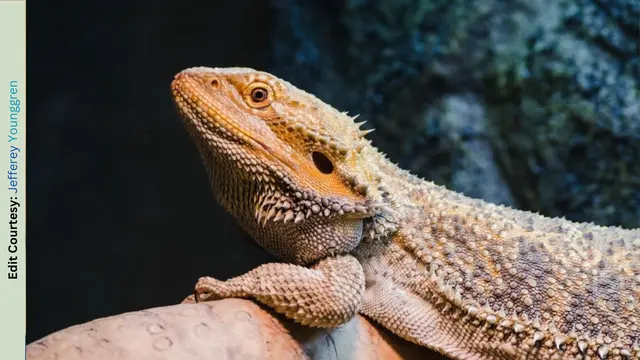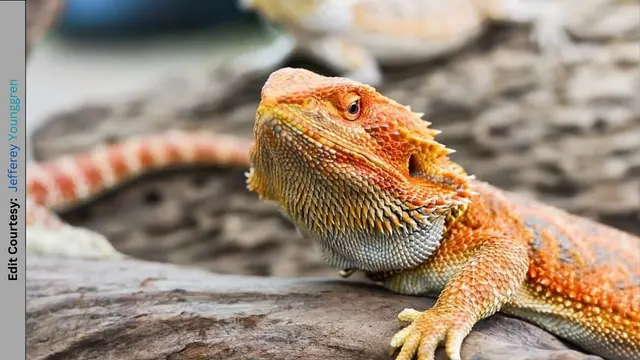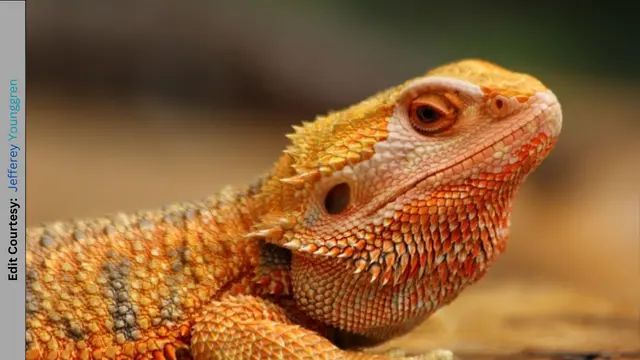Bearded dragons, scientifically known as Pogona vitticeps, are a popular choice of reptile pet due to their friendly nature and relatively easy care requirements.
These fascinating creatures are native to Australia, and understanding their reproductive behavior in the wild is crucial to properly care for them in captivity.
The mating season for bearded dragons in the wild typically occurs during the warmer months. However, in captivity, they can breed any time of year since the temperature and lighting conditions are controlled.
The age, size, and health of the dragon also play a role in determining when they are ready to mate.
The Bearded Dragon’s Mating Cycle

Just like many other reptiles, bearded dragons have a specific mating cycle that is influenced by various factors.
To understand when bearded dragons mate, it’s essential to know the various stages of their reproductive cycle.
Brumation
Brumation is the reptile equivalent of hibernation. During this time, bearded dragons experience a decrease in activity, appetite, and metabolism.
Brumation usually occurs in the winter months and can last anywhere from a few weeks to a few months.
This process prepares the bearded dragons for the upcoming mating season by conserving energy and resources.
Mating Season
Bearded dragons’ mating season typically begins in the spring and can last until late summer.
This period generally starts once the bearded dragons have emerged from brumation and last for several months.
During this time, bearded dragons are more active, and their mating instincts kick in.
Signs of Mating Behavior
During the mating season, bearded dragons exhibit specific behaviors that indicate their readiness to mate. Males may display increased head-bobbing, while females may show signs of submission, such as arm waving.
Additionally, males will become more territorial and may chase females during this time.
Factors Influencing Bearded Dragon Mating Season

Several factors can influence the timing and success of the bearded dragon mating season.
Environmental Conditions
Bearded dragons are ectothermic, meaning their body temperature is influenced by their environment.
Therefore, temperature and lighting play significant roles in regulating their reproductive cycles.
In captivity, providing consistent temperatures and lighting that mimic their natural habitat is crucial for inducing mating behaviors.
Age and Size
Bearded dragons typically reach sexual maturity at 18 months of age.
Ensuring that your bearded dragons are mature enough and of appropriate size is essential for a successful mating season.
Health
A healthy bearded dragon is more likely to breed successfully.
Ensure your bearded dragons receive proper care, including regular checkups with a reptile veterinarian, to maximize their chances of successful mating.
How To Tell If A Bearded Dragon Is Ready To Mate?

Understanding the signs that indicate when a bearded dragon is ready to mate is essential for responsible reptile owners.
Recognizing these cues will ensure that your bearded dragon remains healthy and happy during the mating process.
Signs of Sexual Maturity in Bearded Dragons
Bearded dragons typically reach sexual maturity between 8-12 months of age, although some may mature as early as 6 months.
Key indicators of sexual maturity include:
- Size: Males should measure at least 18 inches (45 cm) long, while females should be at least 16 inches (40 cm) long.
- Weight: Males should weigh around 350-450 grams, and females around 300-350 grams.
Behavioral Indicators That a Bearded Dragon is Ready to Mate
Once your bearded dragon has reached sexual maturity, you should observe behavioral signs that indicate readiness for mating.
These signs include:
- Head-bobbing: Males will often display head-bobbing behavior to assert dominance and attract a mate. Rapid head-bobbing indicates a male’s interest in mating.
- Arm-waving: Females may respond to a male’s advances with a slow, rhythmic arm wave, signaling submission and readiness to mate.
- Coloration changes: Both males and females may exhibit brighter coloration during the mating season, with males often displaying darker beards.
- Increased activity and appetite: Bearded dragons may become more active and consume more food in preparation for breeding.
Preparing for Bearded Dragon Mating Season

To prepare for bearded dragon mating season, it is important to ensure that they have an optimal habitat setup and proper nutrition.
Optimal Habitat Setup
Bearded dragons need a spacious and comfortable habitat to live in.
The ideal habitat should be large enough for them to move around and bask under a heat lamp.
Proper Nutrition
Bearded dragons require a balanced diet that includes live insects, fruits, and vegetables.
It is essential to provide them with a varied diet to ensure they receive all the necessary nutrients for their growth and development.
Bearded Dragon Breeding
Bearded dragon mating season typically occurs in the spring or early summer.
During this time, male bearded dragons may display aggressive behavior towards other males as they compete for the attention of the females.
Introducing Mates
When introducing mates, it is important to ensure that both male and female bearded dragons are healthy and have proper nutrition.
They should also be of appropriate age and size, as mating can be stressful and even dangerous for smaller or weaker dragons.
Post-Mating Considerations
After mating, female bearded dragons may experience a decrease in appetite and become less active.
They may also develop eggs that need proper care, including a suitable nesting area and temperature range.
It is essential to provide them with the necessary care and attention during this time to ensure their reproductive health.
Conclusion
Bearded dragons have a mating season that occurs in the spring or early summer.
Preparing for this season involves ensuring they have an optimal habitat setup and proper nutrition.
When introducing mates, it is important to consider their health, age, and size.
By following these guidelines, bearded dragons can maintain their overall health and well-being during their mating season.
